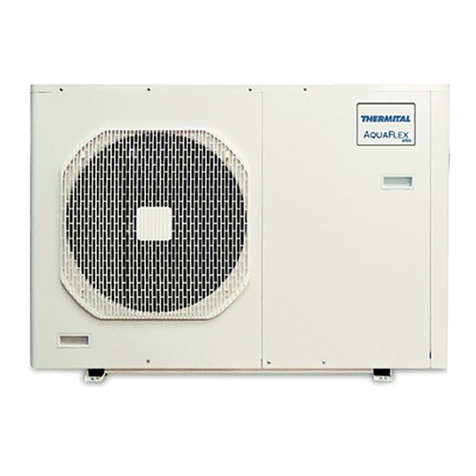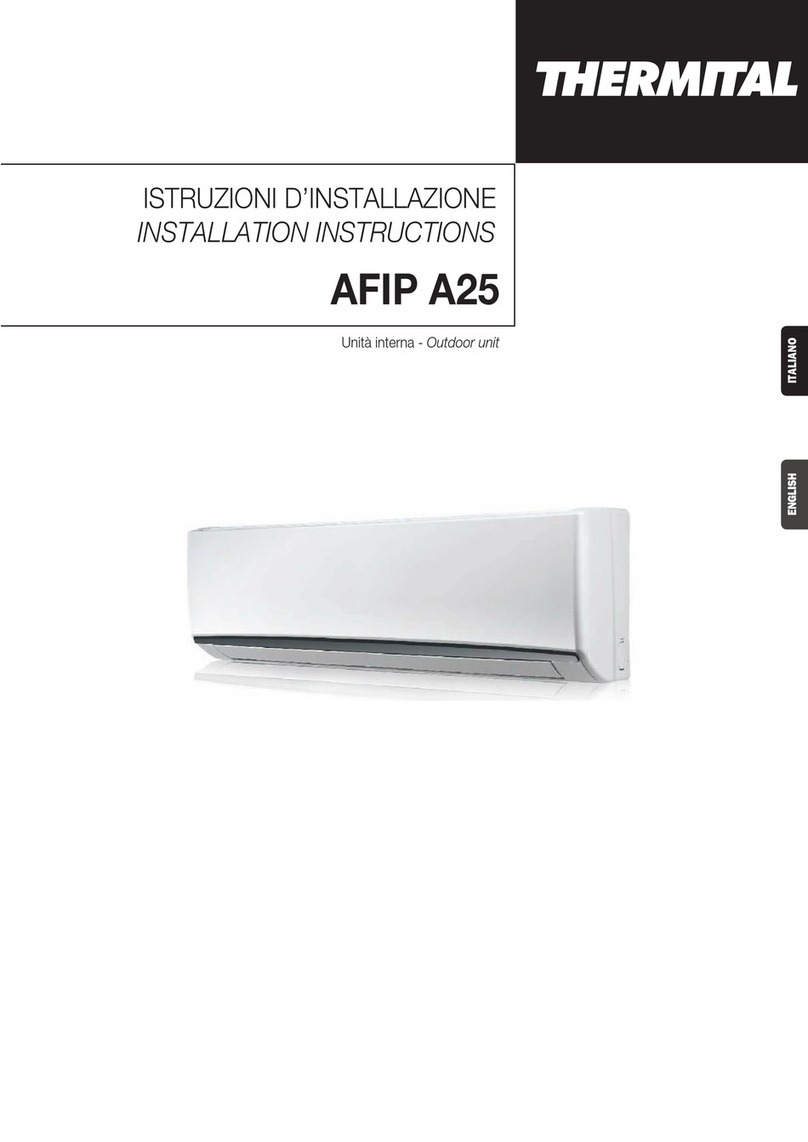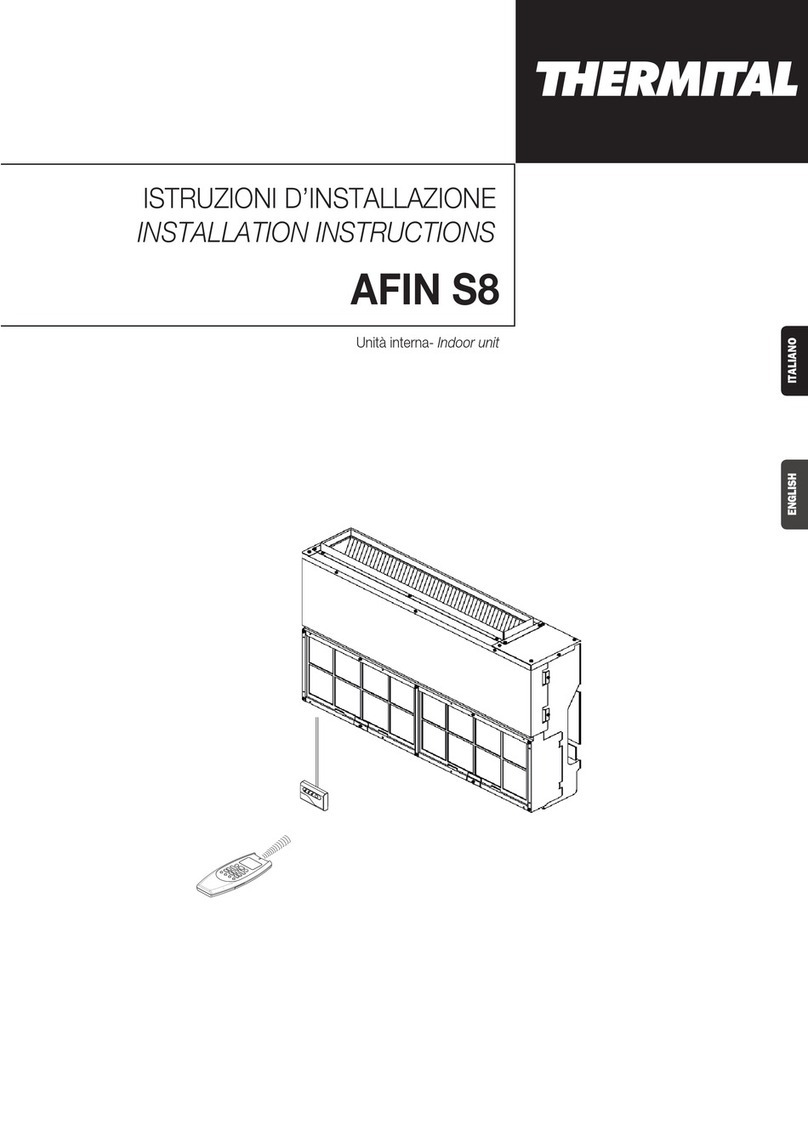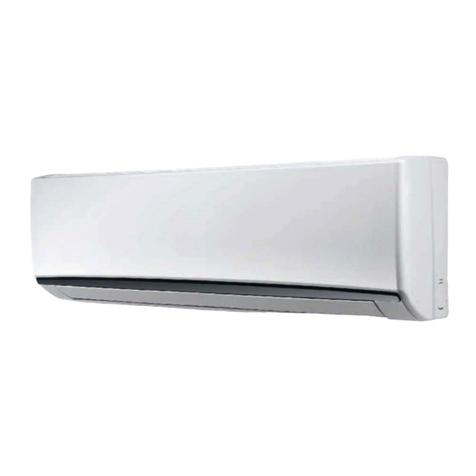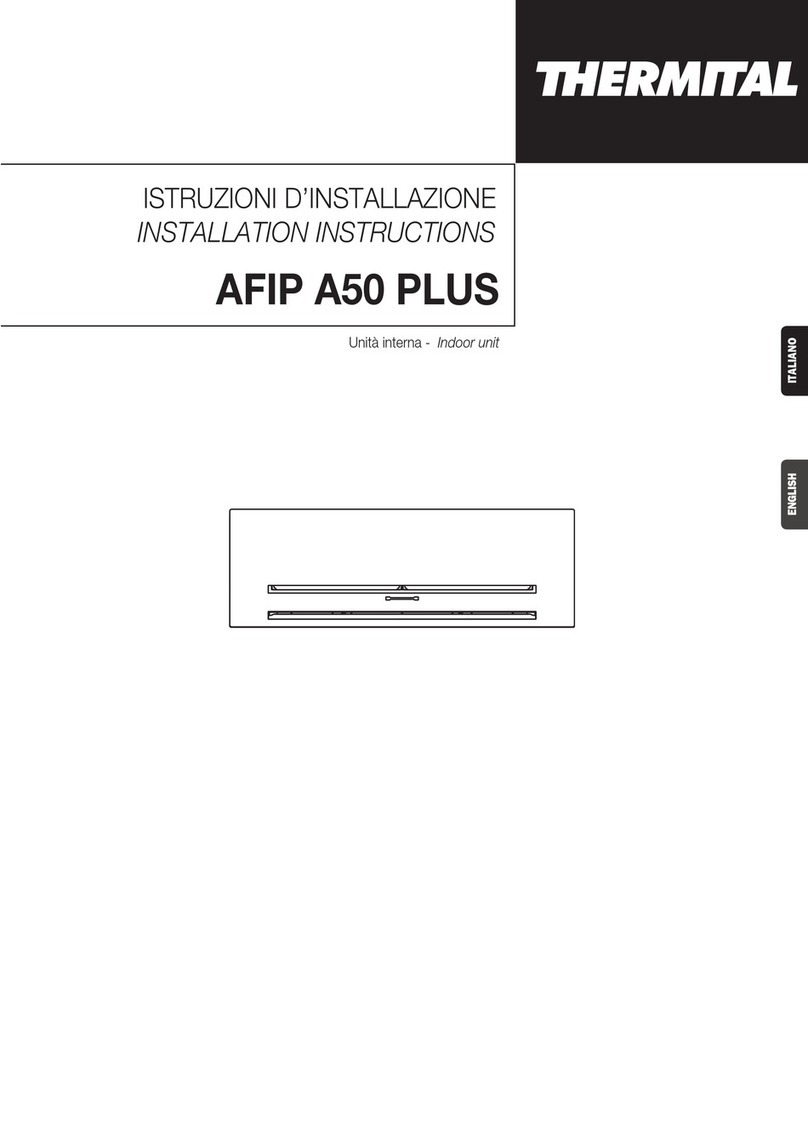
IMPORTANTE!
Leggere prima di iniziare l’installazione
Questo sistema di condizionamento deve seguire rigidi
standard di sicurezza e di funzionamento.
Per l’installatore o il personale di assistenza è molto
importante installare o riparare il sistema di modo che
quest’ultimo operi con sicurezza ed efficienza.
Per un’installazione sicura e un buon
funzionamento è necessario:
• Leggere attentamente questo manuale di istruzioni prima
di iniziare.
• Seguire tutte le istruzioni di installazione o riparazione
esattamente come mostrato.
• Osservare tutte le norme elettriche locali, statali e
nazionali.
• Fare molta attenzione a tutte le note di avvertimento e di
precauzione indicate in questo manuale.
• Per l’alimentazione dell’unità utilizzare una linea elettrica
dedicata.
AVVERTIMENTO
Questo simbolo si riferisce a pericolo o utilizzo improprio
che possono provocare lesioni o morte.
PRECAUZIONE
Questo simbolo si riferisce a pericolo o utilizzo improprio
che possono provocare lesioni, danni all’apparecchio o
all’abitazione.
Se necessario, chiedi aiuto
Queste istruzioni sono tutto quello che necessita
per la maggior parte delle tipologie di installazione e
manutenzione.
Nel caso in cui servisse aiuto per un particolare problema,
contattare i nostri punti di vendita/assistenza o il vostro
negoziante per ulteriori informazioni.
In caso di installazione errata
La ditta non è responsabile di un’errata installazione o
manutenzione qualora non vengano rispettate le istruzioni
di questo manuale.
PARTICOLARI PRECAUZIONI
• Durante l’installazione eseguire prima il collegamento
del circuito frigorifero e poi quello elettrico, procedere
in modo inverso nel caso di rimozione delle unità.
Quando è elettrico
LA SCARICA ELETTRICA PUÒ CAUSARE
LESIONI MOLTO GRAVI O LA MORTE. SOLO
ELETTRICISTI QUALIFICATI ED ESPERTI
POSSONO MANIPOLARE IL SISTEMA
ELETTRICO.
• Non alimentare l’unità finché tutti i cavi e i tubi non siano
completati o ricollegati e controllati, per assicurare le
messa a terra.
• In questo circuito elettrico vengono utilizzati voltaggi
elettrici altamente pericolosi. Fare riferimento allo schema
elettrico e a queste istruzioni durante il collegamento.
Collegamenti impropri e inadeguata messa a terra
possono causare lesioni accidentali o la morte.
• Eseguire la messa a terra dell’unità secondo le norme
elettriche locali.
• Il conduttore giallo/verde non può essere utilizzato per
collegamenti diversi dalla messa a terra.
• Fissare bene i cavi. Collegamenti inadeguati possono
causare surriscaldamento e un possibile incendio.
• I cavi elettrici non devono venire a contatto con i tubi
refrigeranti, il compressore o le parti mobili del ventilatore.
• Nel collegare l’alimentazione e le linee di controllo, non
usare cavi a più conduttori. Usare cavi separati per
ciascun tipo di linea.
Durante il trasporto
Fare attenzione nel sollevare e nello spostare le unità
interna ed esterna. È consigliabile farsi aiutare da qualcuno
e piegare le ginocchia quando si solleva per evitare strappi
alla schiena. Bordi affilati o sottili fogli di alluminio del
condizionatore potrebbero procurarvi dei tagli alle dita.
Durante l’installazione...
... A soffitto, a muro o a pavimento
Assicurarsi che siano abbastanza resistenti da reggere il
peso dell’unità. Potrebbe essere necessario costruire un
telaio in legno o metallo per provvedere a un supporto
maggiore.
... In un locale
Isolare accuratamente ogni tubazione nel locale per
prevenire formazione di condensa che potrebbe causare
gocciolamento e, di conseguenza, arrecare danni a muri
e pavimenti.
... In luoghi umidi o irregolari
Usare una base solida e rialzata dal terreno per predisporre
l’Unità Esterna.
Questo eviterà danni e vibrazioni anormali.
... In luoghi altamente ventilati
Ancorare saldamente l’unità esterna con bulloni e un telaio
in metallo. Provvedere a un adatto deflettore per l’aria.
... In luoghi soggetti a nevicate (per i condizionatori
pompa calore)
Installare l’Unità Esterna su una piattaforma più alta del
livello di accumulo della neve. Provvedere a un’apertura
di sfogo per la neve.
Collegando il circuito frigorifero
• Tenere le tubazioni più corte possibili.
• Usare il metodo di cartellatura per collegare i tubi.
• Oliare con olio anticongelante le superfici di contatto
della cartellatura e avvitare con le mani, quindi stringere
le connessioni utilizzando una chiave dinamometrica in
modo da ottenere un collegamento a buona tenuta.
• Verificare attentamente l’esistenza di eventuali perdite
prima della prova di funzionamento (test run).
NOTA:
A secondo del tipo di sistema, le tubazioni per liquidi o
gas possono essere sia piccole che grandi. Per evitare
confusione, parlando di tubazione refrigerante, sarà
specificato: tubo piccolo per liquido, grande per gas.
Durante le riparazioni
• Togliere tensione (dall’interruttore generale) prima di
aprire l’unità per controllare o riparare parti elettriche.
• Tenere lontano mani e vestiti da ogni parte mobile.
• Pulire dopo aver terminato il lavoro, controllando di non
aver lasciato scarti metallici o pezzi di cavo all’interno
dell’unità.
• Areare il locale durante l’installazione e la prova del
circuito refrigerante; assicurarsi inoltre che, una volta
completata l’installazione, non si verifichino perdite di
gas refrigerante poiché il contatto con fiamme o fonti di
calore può essere tossico e molto pericoloso.
AVVERTIMENTO
3ITALIANO






